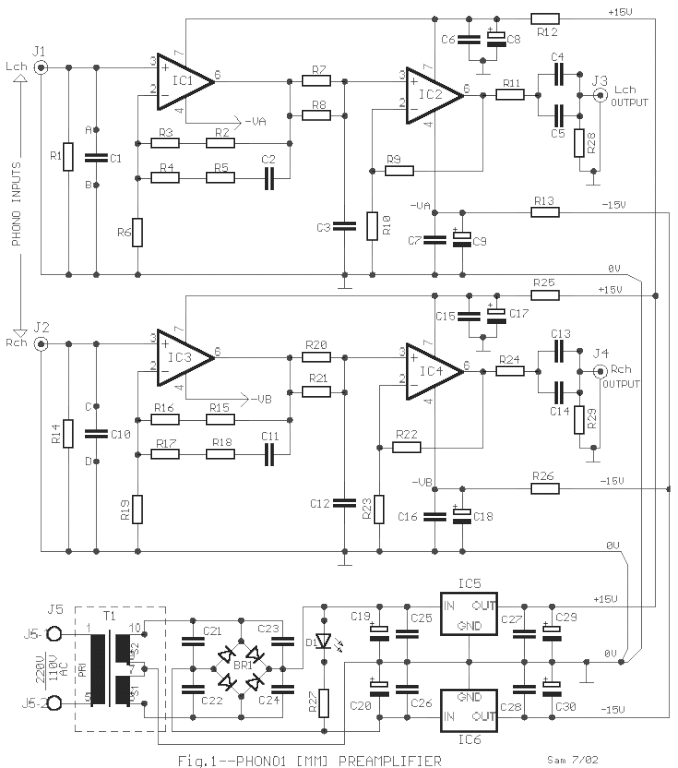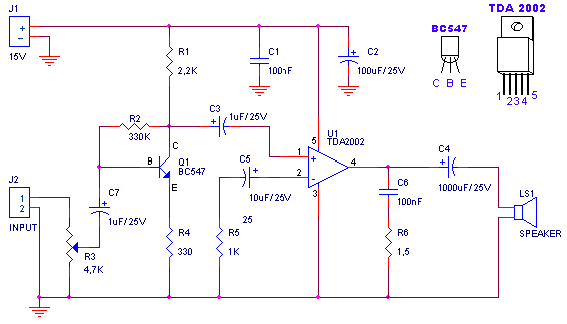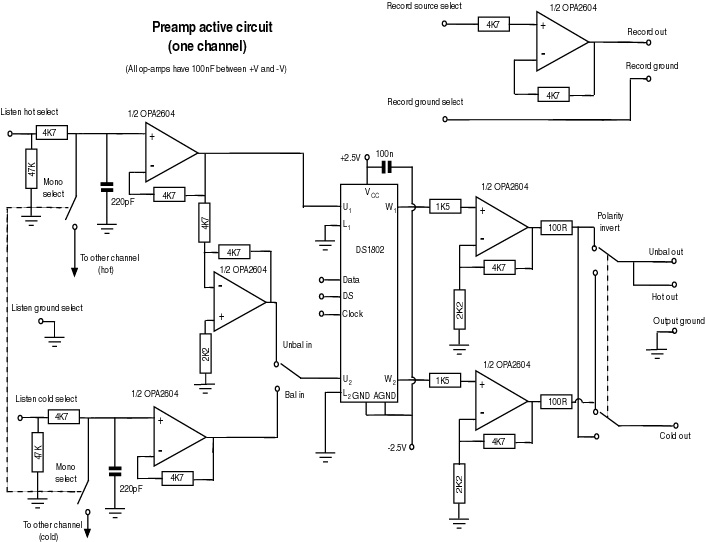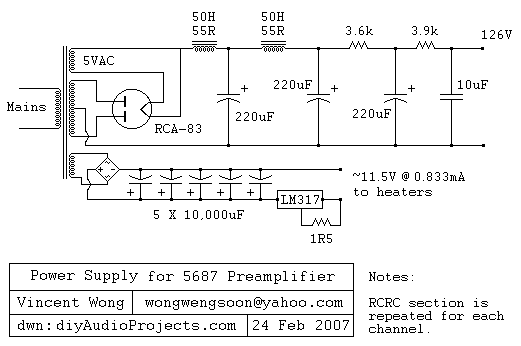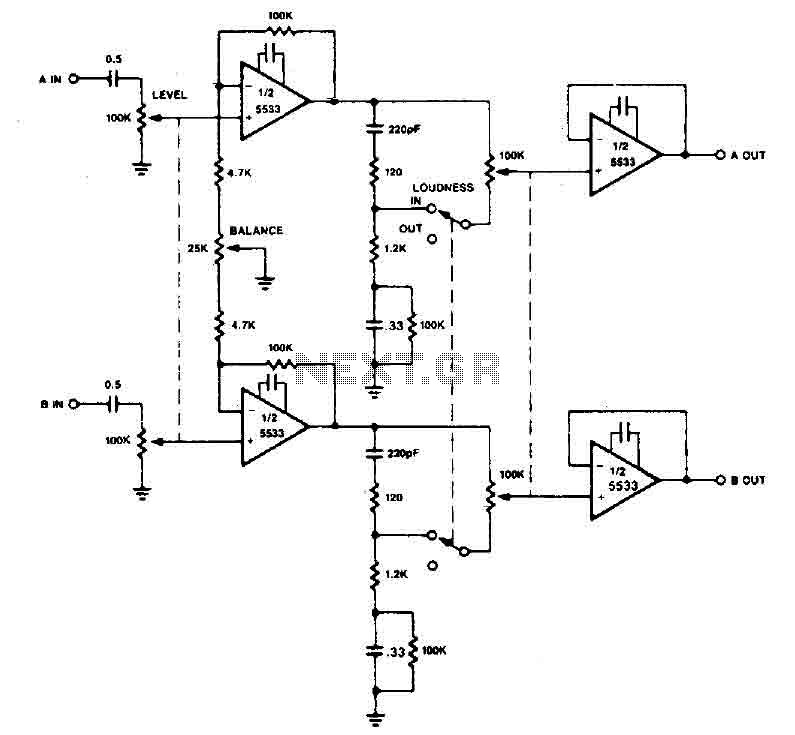
HYDROPHONE PREAMPLIFIER
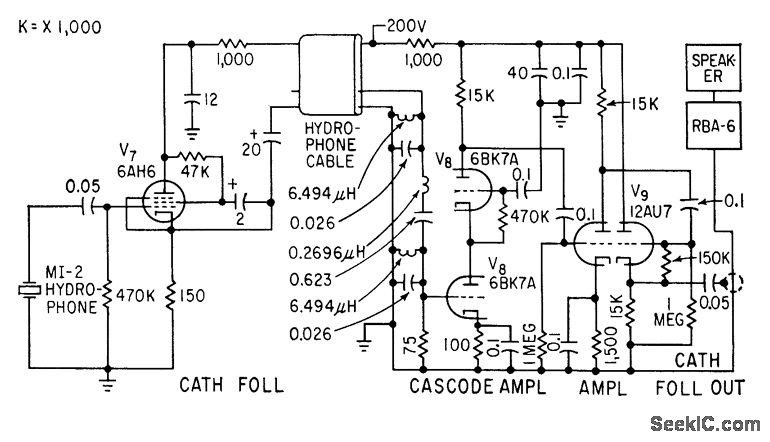
A cathode-follower hydrophone isolation amplifier and high-gain preamplifier are used to feed the Navy RBA-6 low-frequency radio receiver on a trawler. This setup is designed to receive a modulated 21-kc beam that transmits data regarding trawl net depth.
The circuit employs a cathode-follower configuration to ensure high input impedance and low output impedance, which is essential for interfacing with hydrophones. The hydrophone captures underwater acoustic signals, which are then amplified by the isolation amplifier to prevent loading effects. The high-gain preamplifier further boosts the signal before it reaches the Navy RBA-6 receiver, which is optimized for low-frequency operations.
The design focuses on minimizing noise and distortion, ensuring that the depth data transmitted via the 21-kc beam is received with high fidelity. The use of a hydrophone isolation amplifier is crucial in underwater applications, where external noise can significantly affect signal quality. The entire system is designed to operate effectively in marine environments, providing reliable communication and data transmission for trawl fishing operations.
In summary, this circuit configuration is vital for accurately receiving and processing underwater signals, facilitating efficient trawl net depth monitoring for fishing vessels.Cathode-follower hydrophone isolation amplifier and high-gain preamplifier feed Navy RBA-6 low-frequency radio receiver on trawler, to receive modulated 21-kc beam that transmits trawl net depth data. -F. H. Stephens, Jr. , Underwater Telemeter for Trawl Fishing, Electronics, 32:13, p 66-68. 🔗 External reference
The circuit employs a cathode-follower configuration to ensure high input impedance and low output impedance, which is essential for interfacing with hydrophones. The hydrophone captures underwater acoustic signals, which are then amplified by the isolation amplifier to prevent loading effects. The high-gain preamplifier further boosts the signal before it reaches the Navy RBA-6 receiver, which is optimized for low-frequency operations.
The design focuses on minimizing noise and distortion, ensuring that the depth data transmitted via the 21-kc beam is received with high fidelity. The use of a hydrophone isolation amplifier is crucial in underwater applications, where external noise can significantly affect signal quality. The entire system is designed to operate effectively in marine environments, providing reliable communication and data transmission for trawl fishing operations.
In summary, this circuit configuration is vital for accurately receiving and processing underwater signals, facilitating efficient trawl net depth monitoring for fishing vessels.Cathode-follower hydrophone isolation amplifier and high-gain preamplifier feed Navy RBA-6 low-frequency radio receiver on trawler, to receive modulated 21-kc beam that transmits trawl net depth data. -F. H. Stephens, Jr. , Underwater Telemeter for Trawl Fishing, Electronics, 32:13, p 66-68. 🔗 External reference
